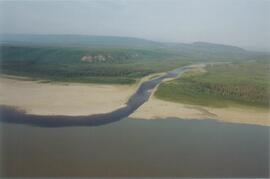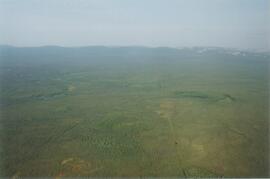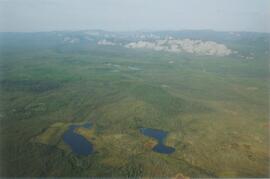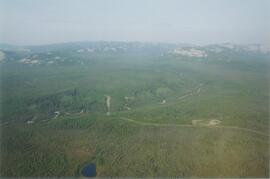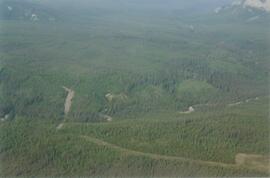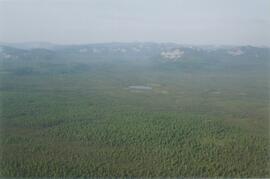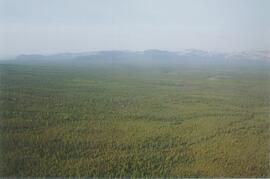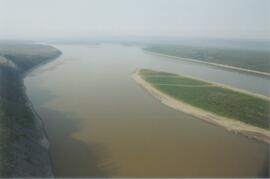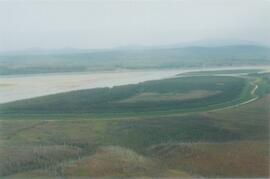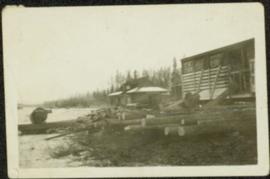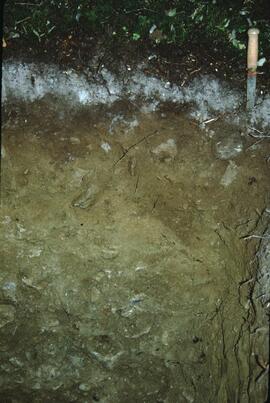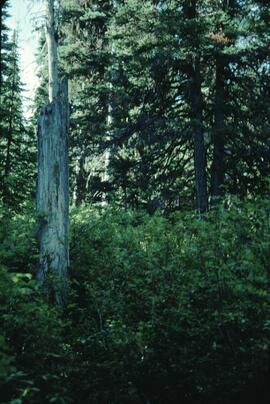File contains meeting minutes of the MacMillan Bloedel Compensations Committee.
MacMillan Bloedel Ltd.File contains information on the replacement of the sawmill operation at Chemainus.
MacMillan Bloedel Ltd.File contains correspondence generated by the board of directors of MacMillan Bloedel.
MacMillan Bloedel Ltd.File contains annual reports for MacMillan Bloedel.
MacMillan Bloedel Ltd.File contains the third quarterly report for MacMillan Bloedel interests in Alberni.
MacMillan Bloedel Ltd.File contains promotional and informational packages regarding MacMillan Bloedel's activities in the Alberni region. Includes two maps of the Alberni region.
MacMillan Bloedel Ltd.File contains a 1991 environmental report for MacMillan Bloedel.
MacMillan Bloedel Ltd.File contains the 1982 second quarterly review of MacMillan Bloedel for its Board of Directors.
MacMillan Bloedel Ltd.Subseries consists of records regarding MacMillan Bloedel that were created or accumulated by Adam Zimmerman during his tenures as Chairman (1983-1990) and Vice-Chairman (1990-1993) of the company after it was acquired by Noranda in 1981. Includes records relating to operations, finances, labour relations, government relations, the Board of Directors, planning, and environmental concerns. Also contains records regarding MacMillan Bloebel's takeover by Noranda.
MacMillan Bloedel Ltd.Item contains the meeting meetings of the annual shareholder's meeting.
James Maclaren Industries Inc.File contains a complete list of every shareholder in Maclaren Power & Paper as of year's end 1979.
James Maclaren Industries Inc.File contains a booklet containing an in depth proposal for a major investment by Maclaren Power & Paper.
James Maclaren Industries Inc.File contains an official proposal by Noranda to purchase class A and B shares of Maclaren Power & Paper.
James Maclaren Industries Inc.File contains Noranda's proposal to buy Maclaren Power & Paper.
James Maclaren Industries Inc.File contains a proposal to upgrade the current low yield sulphite mill to an ultra high yield system.
James Maclaren Industries Inc.File contains the minutes of the 1980 directors meeting of Maclaren.
James Maclaren Industries Inc.Item contains the minutes from the 1980 Maclaren directors meeting.
James Maclaren Industries Inc.File contains a minutes of the 1981 directors meeting of Maclaren.
James Maclaren Industries Inc.File contains a minutes of the 1981 directors meeting of Maclaren.
James Maclaren Industries Inc.Item contains the minutes from the 1980 Maclaren directors meeting.
James Maclaren Industries Inc.Item contains the 1981 business plan for Maclaren.
James Maclaren Industries Inc.File contains an informational package containing cost estimates, marketing strategies, financial information, environmental considerations, manpower, and training, regarding the expansion of the Thurso Kraft Mill.
James Maclaren Industries Inc.File contains a "Report of Lavery, O'Brien regarding Ottawa Valley Power Company".
James Maclaren Industries Inc.File contains correspondence, memoranda, interoffice communications, informational/promotional material, and reports on varying subjects.
James Maclaren Industries Inc.File contains executive correspondence regarding Maclaren and Northwood. Includes letters of resignation.
James Maclaren Industries Inc.This born-digital document consists of field observations for Mackenzie Valley sites N04-06 to -08, Aug. 9-10.
Photograph depicts the Mackenzie Valley and the Franklin Mountains.
Photograph depicts the Mackenzie Valley and the Franklin Mountains.
Photograph depicts the Mackenzie Valley and the Franklin Mountains.
Photograph depicts the Mackenzie Valley and the Franklin Mountains. Pipeline is visible.
Photograph depicts the Mackenzie Valley and the Franklin Mountains. Pipeline is visible.
The eastern flank of the Mackenzie Mountains has a complex history of multiple glaciations by both the Laurentide and Cordilleran ice sheets, recorded in thick sequences of glacial sediments that were documented at 3 locations (Katherine Creek, Little Bear River, Inlin Brook) by:
Duk-Rodkin, A., R.W. Barendregt, C. Tarnocai, and F.M. Phillips. 1996. Late Tertiary to late Quaternary record in the Mackenzie Mountains, Northwest Territories, Canada: stratigraphy, paleosols, paleomagnetism, and chlorine-36. Canadian Journal of Earth Sciences 33 (6): 875-895. https://doi.org/10.1139/e96-066
Of the 3 sites, the exposure on Inlin Brook, a tributary of the Keele River, was the least well-documented, so in summer 2004 Dr. Paul Sanborn joined a field party of the Geological Survey of Canada (GSC) based at Tulita, NWT, and was given helicopter support to visit Inlin Brook (August 5-8). A brief visit was also made to the Little Bear River site.
On August 9-10, Sanborn joined Alejandra Duk-Rodkin (GSC) and Rene Barendregt (U Lethbridge) in helicopter-assisted field work at sites in the Franklin Mountains and elsewhere east of the Mackenzie River.
File contains various correspondence regarding 1964 annual cuts for sawmills in the area, memoranda consisting of various administrative issues such as the 1973 amalgamation of Purden Lake and Aleza Lake, and the sale of lumber previously infested by spruce beetles. File also contains 1972 applications to purchase Crown timber and road use, as well as 1966 logging permits.
File contains correspondence and other material concerning trade with the US.
Zimmerman, AdamSub-subseries consists of records relating to the third phase of the Canada-U.S. Softwood Lumber Dispute, commonly referred to as Lumber III. In 1991, Canada informed the United States it was withdrawing from the Lumber II Memorandum of Understanding. In response, the Department of Commerce (DoC) initiated a countervailing duty investigation, resulting in the DoC imposing countervailing duties. This time, the Department of Commerce's determination was reviewed by a binational panel organized under the Canada-U.S. Free Trade Agreement (CUSFTA). The panel found that the DoC's determination could not be supported by substantial evidence. In 1996, the United States and Canada reached a five-year trade agreement, The Softwood Lumber Agreement, officially ending Lumber III.
Zimmerman, AdamFile contains the "Testimony on U.S. Trade Policy and Unfair Trade Practices" by Ambassador Clayton Yeutter, United States Trade Representative, before the Committee on Finance, United States Senate, November 14, 1985.
Zimmerman, AdamFile contains correspondence and other material concerning trade with the US.
Zimmerman, AdamFile contains clippings and newspaper articles regarding the softwood lumber dispute.
Zimmerman, AdamSub-subseries consists of records relating to the second phase of the Canada-U.S. Softwood Lumber Dispute, commonly referred to as Lumber II. In 1986, a U.S. lumber industry group, the Coalition for Fair Lumber Imports, petitioned the Department of Commerce (DoC). The United States International Trade Commission (USITC) once again arrived at the conclusion that Canada's exports unfairly impacted American producers. This time, the DoC did find Canadian forest programs to be countervailable and set a preliminary duty of 15%. Before the subsidy was imposed, the United States and Canada agreed to a Memorandum of Understanding that created a phased tariff. One of the terms of the MOU was that Canada levy an export tax on lumber traveling to the United States. Provinces that were affected had the chance to reduce this tax, if they performed any action meant to counterbalance their subsidies. British Columbia had the tax removed in 1987 while Quebec had it partly lifted in 1988.
Zimmerman, AdamFile contains several bound copies of US legislation pertaining to the Canada/US softwood lumber trade dispute.
Zimmerman, AdamFile contains clippings and newspaper articles regarding the softwood lumber dispute.
Zimmerman, AdamSub-subseries consists of records relating to the beginnings of the softwood lumber dispute, commonly referred to as Lumber I. In 1982, when the U.S. lumber industry petitioned the U.S. Department of Commerce (DoC) to impose a countervailing duty. Ultimately, the DoC found that Canada's stumpage system was not specific to any single industry and thus not countervailable. While the DoC made this claim, the United States International Trade Commission (USITC) believed that these Canadian imports did in fact hinder U.S. producers. The U.S. lumber industry chose not to appeal.
Zimmerman, AdamPhotograph depicts pile of cut logs in right foreground, unknown building and forest in background. Logs lie in front of what appears to be a large freight box.
This born-digital "Lucille Mountain soils" document provides a description and basic data for the Lucille Mt. pedon.
